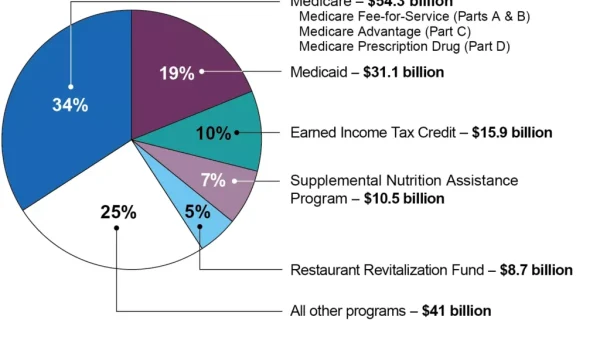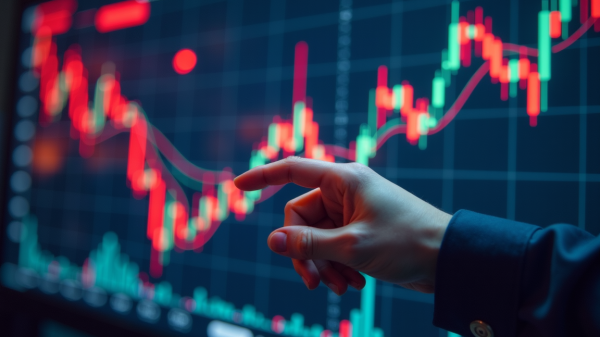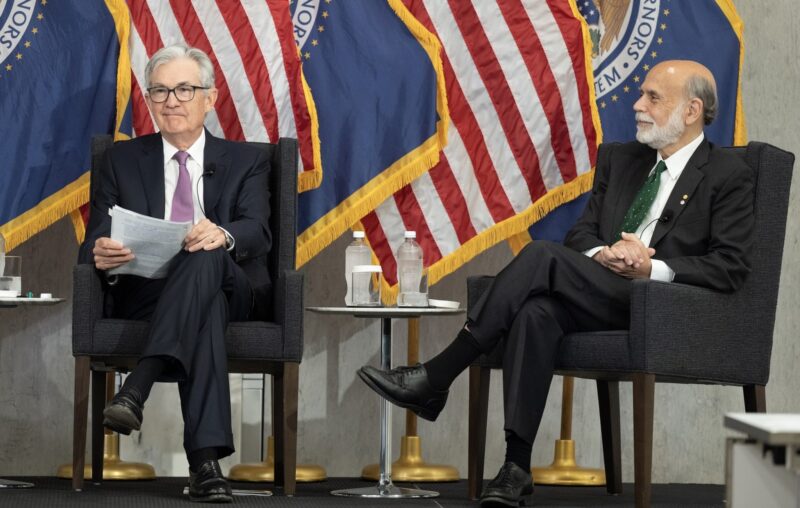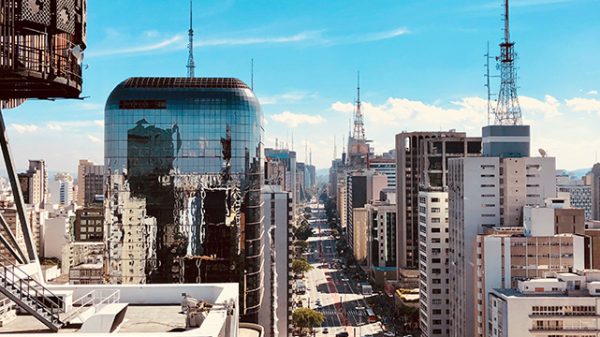The Federal Reserve system in the United States is the largest financial institution in the world with more than $7 trillion in assets. It “manages” the most important currency in the world. Its decisions can dramatically affect the course of the largest economy in the world.
Wouldn’t it be nice if its officials knew what they were doing?
Yet ever since the 2008 financial crisis, the Federal Reserve has more or less been whistling in the dark. After that crisis, it dramatically changed its approach to monetary policy and targeting interest rates. For a decade it struggled with inflation being “too low.” Then, in 2021 and 2022, it had to deal with the forest fire of inflation — a fire still burning in some sectors of the economy.
Three months ago I wrote about the “Ratchet Effect” on the Fed’s balance sheet. In its May 1st announcement, The Fed said it would slow its bond roll-off plan from ~$1 trillion annually to about $600 billion annually. That means, ceteris paribus, that its balance sheet will drop below $7 trillion by the end of this year, $6.4 trillion by the end of 2025, $5.8 trillion at the end of 2026, $5.2 trillion at the end of 2027, and $4.6 trillion at the end of 2028 — finally reaching its pre-COVID level.
Consider how, if the trend of asset growth at the Fed from 2002 – 2007 (~4.4 percent annual growth) had continued, the Fed’s balance sheet at the end of 2023 would have been a modest $1.76 trillion instead of $7.7 trillion. And forecasting out to 2028, would have been roughly $2.2 trillion — less than half where the Fed will be if its current quantitative tightening continues for four more years.
How did we get here?
The entire framework for traditional monetary policy was thrown out the window in 2008 with the Fed’s response to the 2008 financial crisis. Open market operations were no longer used to maintain a target interest rate. In the name of preventing a second Great Depression, then-Fed Chairman Ben Bernanke opened a Pandora’s Box of monetary ills in 2008. And like the Greek myth, there may be no way of putting these ills back in the box.
In March of 2008, markets were uneasy. Housing prices had stalled and began falling in 2007. Mortgage-backed securities (MBS) began falling too. Leveraged financial firms began reporting huge paper losses. Bear Stearns saw its stock price crater from $172/share in January of 2007 to less than $10/share by March 2008, as it faced potential bankruptcy. The Treasury and the Fed decided that Bear should be acquired rather than be allowed to fail.
To persuade JP Morgan Chase to purchase Bear, the Fed agreed to buy ~$30 billion dollars of Bear’s riskiest assets. The Fed was not technically allowed to do this. So it set up a shell company, Maiden Lane, and lent Maiden Lane the money to purchase these assets from Bear. JP Morgan initially agreed to purchase Bear for $2/share but was strong-armed by Bear shareholders to revise the offer to $10/share. Bailing out equity holders departed from the Fed’s ‘lender of last resort’ role.
In the fall of 2008, the giant insurer, AIG, ran into financial trouble. It had written a huge amount of insurance on the prices of MBS in the form of credit default swaps. Under the terms of this insurance, if the price of the underlying MBS fell enough, AIG would have to post collateral. As the entire MBS market plunged throughout 2008, AIG found itself on the hook to post tens of billions of dollars of collateral.
Enter the Federal Reserve Bank of New York. Calling a similar play to the Bear bailout, the NY Fed set up Maiden Lane II, and used it to provide a secured credit line to AIG for up to $85 billion. The terms of the credit line involved taking a majority ownership stake in AIG. This vehicle also purchased MBS from AIG’s subsidiaries. Maiden Lane III was set up for the similar purpose of buying collateralized debt obligations (CDOs). Besides facilitating direct lending to AIG, Maiden Lane II and Maiden Lane III were used to stabilize the prices of MBS and CDOs.
In addition to these lending facilities, the Federal Reserve began buying large quantities of securities directly — not only Treasury securities, but also securities issued by government-sponsored enterprises like Fannie Mae and Freddie Mac. It bought Fannie and Freddie debt instruments. IT also bought large quantities of MBS issued or insured by Fannie and Freddie. Beyond that, the Fed even bought some private-label MBS — again, to support the price of these assets, to reduce paper losses in the financial system.
Besides bailing out specific financial institutions, the Fed wanted to provide even more liquidity directly to the broader market. Rather than banks and money market funds having to mark down or offload their assets at “fire sale” prices, they could sell them to the Federal Reserve or borrow money against them from the Fed at valuations well-above the fire sale market prices.
So, Fed officials created an alphabet soup of liquidity “facilities” to carry out these massive asset purchases: the AMLF (Asset-Backed Commercial Paper Money Market Mutual Fund Liquidity Facility), the CPFF (Commercial Paper Funding Facility), and the MMIFF (Money Market Investor Funding Facility).
This, by the way, was the Fed’s playbook in dealing with the failures of Silicon Valley Bank and Signature Bank in March of 2023. The Fed immediately created a facility, Bank Term Funding Program (BTFP), to lend money to banks against bond portfolios whose market value had plummeted as the Fed rapidly raised interest rates starting in 2022. The BTFP ultimately injected about $400 billion dollars to shore up the banking system.
These liquidity facilities flooded the market with bank reserves, which raised the question: how would the Fed successfully raise and meet higher interest rate targets when the market was flooded with a huge number of reserves?
Under the traditional open market operation framework, the Fed would have to effectively reverse its liquidity creation by selling hundreds of billions of dollars of MBS and agency debt. That action could destabilize financial markets again. Instead, the Fed opted to change its operating framework to a floor system. Congress had given approval to pay interest to banks for reserves held at the Fed — reserves that ballooned in response to the Fed’s asset buying spree.
Interest on reserves raised the opportunity cost (or floor) of banks lending money to one another. Raising the interest it paid on reserves effectively raised the Fed funds rate floor. Changing its interest rate target became a matter of changing the rate of interest the Fed paid banks on their deposits. Only there was one more wrinkle. For these interest rate changes to affect any of the market beyond banks, the Fed would have to engage in similar behavior with all financial institutions, not just banks.
For example, banks would not make loans at 2 percent if they received 3 percent interest on their reserves at the Fed. But non-banks might make loans for 2 percent – unless they, too, had a 3 percent lending alternative. To address this, the Fed increased its use of repo and reverse-repo market. Repo and reverse repo basically mimic the function of the federal funds market, only the transactions are collateralized — involving the temporary exchange of securities — and are open to all kinds of non-bank institutions. Over the past two years, the Federal Reserve has paid over $300 billion dollars in interest on bank reserves alone — not including interest paid on repo transactions.
When quantitative easing flooded the market with bank reserves, interest rate targeting was severed from the size of the Fed’s balance sheet. The Fed could now increase the size of its balance sheet, seemingly without limit, and raise its target interest rate. The Fed began raising interest rates in 2022 with an enormous balance sheet of almost $9 trillion. And it will likely begin cutting interest rates next month without having to change how many assets it currently holds.
This is the brave new world of monetary policy we live in today.
























